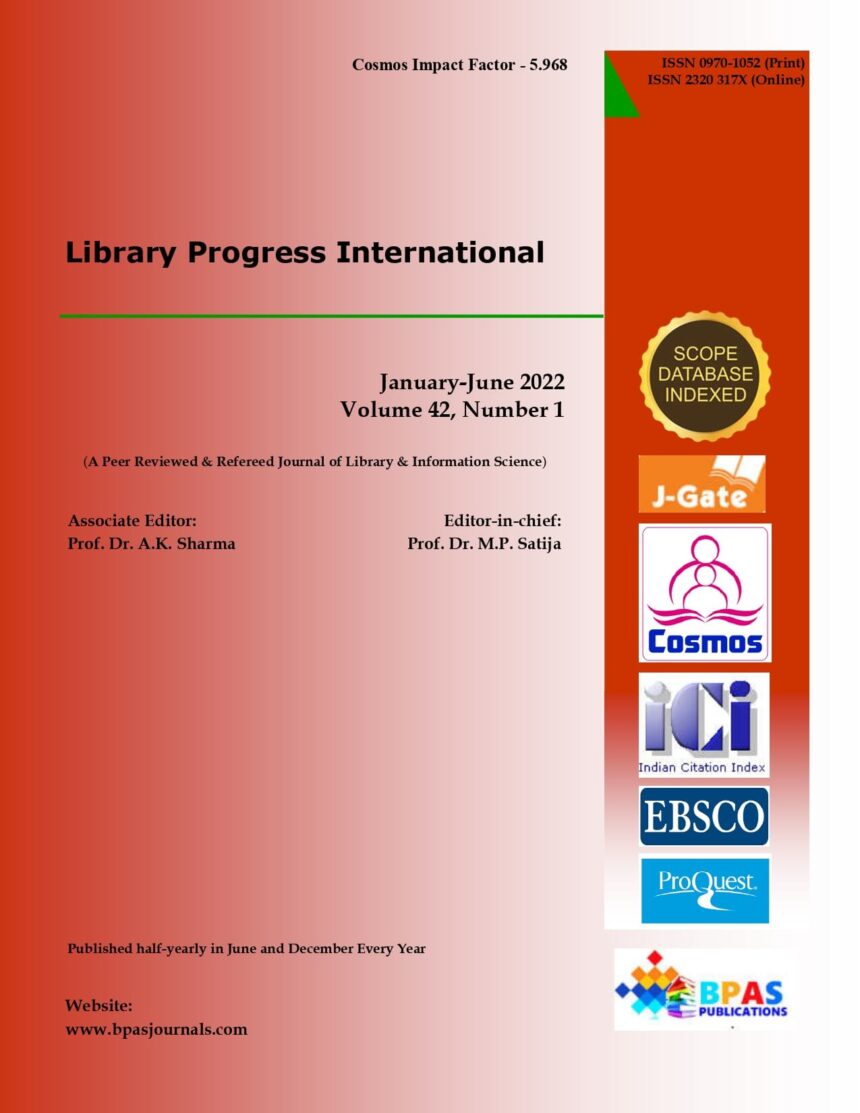A Comparative Study of Web Enabled Information Services through Web Sites in Central University Libraries of Delhi and NCR
DOI:
https://doi.org/10.48165/Keywords:
University library information centres, Central University Libraries, Web enabled information services, Library websites, e-Resources, OPAC, Institutional Repository, Special services, User orientation & Education, NIRFAbstract
The paper surveys the central university libraries of Delhi and NCR to find out web enabled information services facilitated through their websites and rank them also. National Institute ranking Framework (NIRF ranking 2017) was used to select the central university libraries of Delhi and NCR. There are only three central university libraries of Delhi & NCR in the top hundred universities in NIRF 2017. The content analysis of the websites of the selected university libraries and the review of the literature was used to examine the various information services provided by them and select some common services for the study. A checklist of components to be studied for selected web enabled information services was prepared through review of literature. The study included eight information services from the patrons’ point of view (i.e beneficial for the patrons). The findings revealed that many web enabled information services are being facilitated through their interactive websites. Jawaharlal Nehru university library is on the first rank in the provision of web enabled information services under study. It is followed by Jamia Millia Islamia university library. University of Delhi Library is last in rank and providing less than the mean percentage of web enabled information services under study. The paper offers a comparative synopsis of the provision of web enabled information services in the central university libraries of Delhi and NCR. How much these services are effective and the extent of welcome by the patrons needs to be studied.
Downloads
References
. Burke JJ, 2006. Library Technology Companion: A Basic Guide for Library Staff. Neal Schuman Publishers: New York.
. Tripathi M. and Kumar S., 2010. Use of Web 2.0 tools in academic libraries: A reconnaissance of the international landscape. International Information & Library Review, 42(3): 195-207. [3]. Olasina G., 2011. The use of Web 2.0 tools and social networking sites by librarians, information professionals, and other professionals in workplaces in Nigeria. PNLA Quarterly, 75(3): 10-15.
. Shalini R. Lihitkar and Vaibhav P. Manohar, 2014. Designing a conceptual Framework for Library 2.0 Services. International Journal of Emerging Technologies in Computational and Applied Sciences, 9(2): 176-184.
. Lougee W. P., 2002. Diffuse Libraries: Emergent Roles for the Research Library in the Digital Age. Council on Library and Information Resources, Washington, DC.
. Geetha P., Wilson K. C. and Sivakumar R., 2017, Facilitating E-learning through National Knowledge Network. DESIDOC Journal of Library & Information Technology, 37(2): 91-97. [7]. Giddaiah D. and Saraswathy P., 2014. Use of web information resources by researchers in the disciplines of biological sciences in University of Karnataka. Journal of Library and Information Technology, 10(2): 17–37.
iversityRanking.html (Accessed on 18 March 2018). [12]. Home - Jawaharlal Nehru University Library. Available at http://lib.jnu.ac.in/ (Accessed on 18 March 2018)
. Delhi University Library System. Available at http://crl.du.ac.in/ (Accessed on 18 March 2018)
. Jamia - Dr Zakir Husain Library (Central Library) - Zakir Husain Library. Available at https://www.jmi.ac.in/zhlibrary

